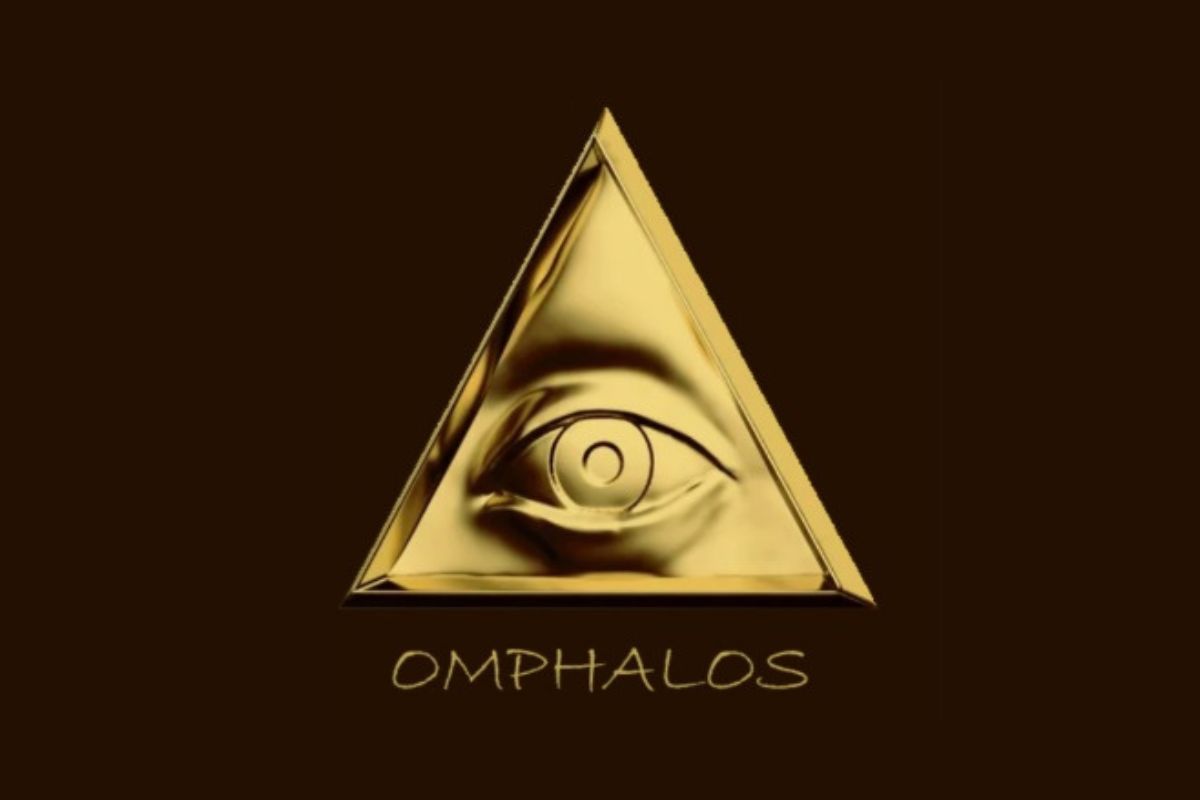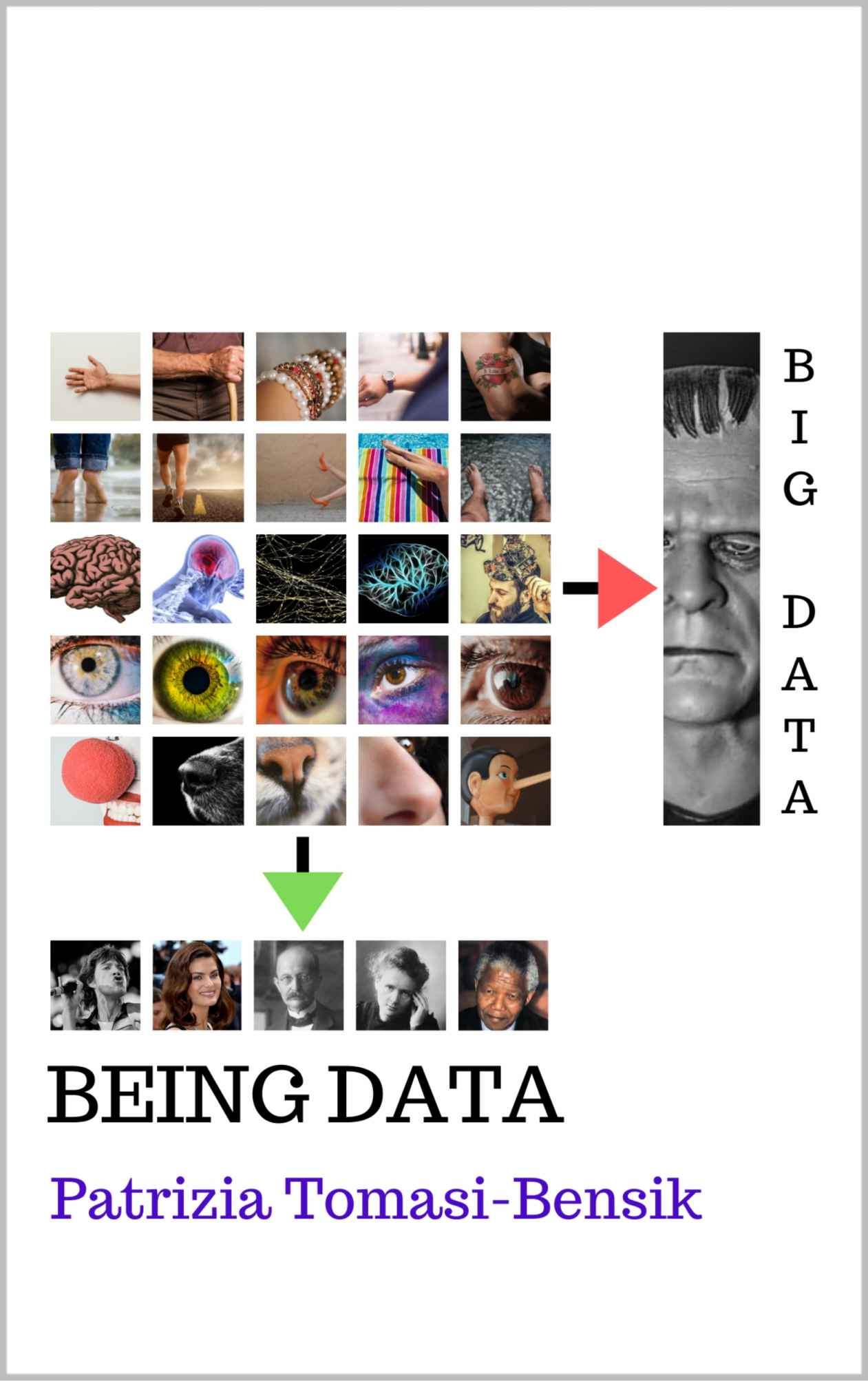Planck E PressCenter Articles
Omphalos, A Bridge Between Chaos and Complexity
Date published: 2023-02-27
Date modified: 2023-02-27
Reading time: 00:10:45

Abstract
Thirty years ago, the Academy was surprised by the promises related to Chaos and Complexity Theories. Thirty years ago, we sought a bridge between the two. Every day -each one in its way-we wake up, have breakfast, shower, and go do what we have to do. When I wake up, I know I'm going to brush my teeth. I know I'm going to a future I have no doubts about. Why? Because the degree of entropy of the context is, for me, zero. I don't consider brushing my teeth; I have no doubts whether I brush now, in two hours, or never again. Starting from a premise established way back when I learned to brush my teeth by myself, I know I should do it every morning. The future that awaits me, in the context of brushing my teeth, is as familiar to me as the past and the present. This is the bridge –between Chaos and Complexity- that we want to present in this work.
Introduction
A sun that never sets, a cloudless sky of infinite autumn, on a planet totally devoid of geographical features. There is wind. With twelve equations programmed into a McBee computer, Edward Lorentz substantiates the first non-linear approach to climate. He is so confident in the parameterized initial conditions that he decides to have a coffee, certain that the computer will print the results of a reliable weather forecast. On the way back, he noticed that his Model 1961 computer had rounded the numbers in his simulation, originally to six decimal places, to three. Lorentz opted to redo the calculations, to six decimal places, and even so, the computer predicted the time completely different than the original.
In 1963, Lorentz put his thesis on paper, stating –at first- that "slightly different initial situations can develop into a considerably different situation."
That is, there is a principle of order that always returns. So far, it's impossible to predict how or when. The compilation of data from this stable context of Complexity in the midst of what we call Chaos is what escapes us. The bridge is now non-existent.
There was a moment in the development of the human being when he apprehended death. It is from the ego that dies that the Arrow of Time arises, and with it, the perennial anguish with the imminence of death. Even though the future terrifies us, everything that is routine in our lives, despite occurring in the future, does not cause us any anxiety. Why are we sure that things will happen the way we envisioned, and 99.9% of the time, it is what happens?
For the same reason that an excellent horsewoman, when she falls from her horse, is urged to remount immediately. Without thinking, without considering, without pondering the uncertain future that opens up, the moment she includes unexpected falls in her inventory.
Newtonian physics deals with positions and velocities, while quantum mechanics deals with frequencies and amplitudes. One deterministic, docile, ideal, comfortable, and unreal. Other, probabilist, wild, enfant-gâté, prickly, and delicious. Heisenberg and Bohr argue that chance is an objective factor of Nature and the calculation of probabilities, a construction of our minds that allows us to operate what we know as life.
And speaking of calculation, nothing better exemplifies the simplicity –not to say unreality- with which we compute what we apprehend. Calculus, both integral and differential, is –definitely- an invention that is recognized as an element of approximation and defended with the use of limits that lead the error to tend to zero!
In integration, for example, the area under a curve is calculated from the trace of countless rectangles of infinitesimal dimensions. The sum of these areas is the result.
Just like in classical physics, we opt for an ideal approach, an ideal situation. And we plot this result on an Arrow of Time, whose flow, also ideally constant, embraces past, present, and future; even if the present always escapes us. We live the moment as an amalgamation of experience and hope, where the condition of a leaf in the wind results from the constant increase in entropy in the translocation of the Complexity (inserted in Chaos) from the three-dimensional context -where only the Frequency of Time exists- to the computation of the event in the non-dimension of a point on the Arrow of Time.
Or simply: classical physics, calculus, point, and Arrow of Time.
While the logic of the linear interpretation of reality –which leads to Divination- was developed by Greek philosophers, the Chinese already thought in clusters of events, which leads to Synchronicity.
That is, causal (linear) thinking is limited to possibilities in a continuous time, where the cause comes before the effect, whereas synchronistic thinking brings together potentialities of events and, consequently, time boils down to the instant in which the possibility that it was evaluated from the conjunction of these events becoming probability, it blooms in the occurrence.
The eastern modus vivendi does not separate physical from psychological events. In questioning what is likely to occur simultaneously, it is essential to synchronistic thinking to look at the physical and psychic aspects of reality.
Divination is deeply connected with linear thinking, with the Arrow of Time, while Synchronicity deals with the contextualization of events. The instant.
Omphalos is the concomitant, instantaneous and continuous evaluation of the event that is sought, with the fractal treatment of the multidimensionality of the scenarios, taking into account the Frequency of Time, the amplitude of the scenarios, and data quality, aiming at an entropy that tends to zero.
Results
Our proposal for Omphalos starts from the Triune Brain (MacLean, 1990): the closer to the neural chassis, the reptilian brain, our relationship with the context is, and the lower the degree of entropy. Thus, to the experience we compile during life –albeit stochastic (noise)- we confer different degrees of determinism (signal); increasing Complexity and entropy is not necessarily true. Which is not of the slightest importance as long as they are true in our apprehensions of reality.
That is, when processed in the neocortex, that context loses dimension and temporal frequency, being plotted –on the Timeline- an experience that will transit as memory in the limbic system. The world we project from our experience (again: syllogistically or synchronistically compiled by the neocortex) has a very high degree of uncertainty that, combined with the cocktail of biochemical agents that we are, results in perennial anxiety about the future.
In addition to Divination and Synchronicity, the bridge we propose between Chaos and Complexity results in the expansion of the Omphalos, through the application of the Frequency of Time and amplitude of the evaluated event, with the control of the entropy decrease resulting from the fractal treatment of the potentialities-possibilities-probabilities-occurrence; given the parameters factors, cofactors and adjacent factors; precision and accuracy.
In his paper How Long Is the Coast of Britain? Statistical Self-Similarity and Fractional Dimension, Benoît Mandelbrot introduces us to the concept of dimensional fractionation, where “Coastal shapes are examples of highly involved curves, so that each of their portions can - in a statistical sense - be considered a reduced-scale image of the whole. This property will be called "statistical self-similarity".
By adopting the relationship between the fractal and reality, we bring statistical self-similarity to the evaluation of the multitude of potential-possible-probable scenarios, in a way that allows the dimensioning of the occurrence. Thus, we enclose infinite powers, possibilities, and probabilities within the finitude of the context and apply the interrelationship of factors, cofactors, and adjacent cofactors, measuring –based on the use of precision and accuracy- the entropy of the system.
The tool we use is CONTEXT3D, which works with the interrelationship of 255 behavioral patterns (human and anthropic productive cycles), which allows us to assess the complexity of the interrelationship of 383,000 pieces of data (or points, in Big Data language); which implies a decrease in entropy.
Let's go to interrelated contexts, to Omphalos:
- In a Being Data approach, the algorithms are constructed three-dimensionally, greatly facilitating the actuality of the process through the constant measurement of the flow of emergent properties, which allows the perception of changes in the state of factors, cofactors, and adjacent cofactors; of signals and noise; of precision and accuracy.
- CONTEXT3D is a complex algorithm that brings together historical parameters, market behavior assessments, and human behavior assessments. My conviction is based on the simplest of logic: if we are holders of the power that leads us to create reality, the answers to all unknown questions are certainly within our reach. That's Omphalos.
- Likewise, when treating the ordered islands as complexities that inhabit Chaos (Unknown Complexity) and evaluating the interrelationship of contexts, using fractals to compute the infinite possibilities contained in each of them and the interrelationship of amplitudes and frequencies, we can extract from ordered islands data/information/knowledge that signal the decay of the situation (occurrence).
- In a network, three connections point a way beyond metastability. Could we treat this set as that Complexity button inside what we would no longer treat as Chaos but as Unknown Complexity? The evaluation of these three nodes would allow the apprehension of the pattern that stabilizes, as proposed by Humberto Maturana, where the connections in the neural network do not represent an existing world but specify a reality that occurs due to the organization that we perceive of the three and other connections of the covalently closed context?
- Within the linearity of classical mathematics, there is an inflexibility that always allows the exact quantification of data. However, when dealing with non-linearity, what traditional mathematics treats as chaotic –basically because of its impossibility of quantitative precision- Complexity finds interrelation of stable patterns. That is, the order exists under a deeper layer that, if it is not quantifiable (and it is not), is qualifiable.
- In his absolute and solitary courage to face Nature's greatest and most bewildering challenges, demolishing -without any problem- hallowed monoliths of physiology, mathematics, and physics, Mandelbrot was ridiculed, ostracized. Nonetheless, his way of thinking ensured his excellence. Faced with the beauty and magnitude of lightning-bolt, for example, Mandelbrot reflected on the distribution of its trajectory, and not on its direction.
- As Nature is beautiful in its twisted, pointed, intertwined, and highly complex forms, Benoît focused on two parameters that resemble our concept of ordered islands: scales and phase transitions. Omphalos.
- One of the fascinating aspect of fractals is also what allows their understanding when explaining our circulatory system. By definition, fractals are characterized by containing the infinite within a finite space and this is what happens with the arteries and veins of our body; this is what happens to our lungs, which cover an area equivalent to 195 m2. An enormous area where potentialities, possibilities, and probabilities continue to inhabit the occurrence, necessarily confined to a restricted space.
- At the subatomic level there is no concept of matter; there are interconnections of patterns that move towards Complexities that result in –or not- stability. Ultimately, the stability of the interrelation of patterns would bring the potentiality of matter to its consubstantiation.
Entropy measures the possible arrangements of the component particles of a system, and there, with one foot firmly planted in quantum mechanics, I would like to extend its fundamental role in our proposition of Omphalos.
Let's take a closed system: a glass of water, for example.
It would be quite simplistic to measure the entropy of the water in this glass as its thermal energy (J) over 0.00362 (K). The states subject to entropy measurement can start from the perspective of water droplets that form under a saucer placed over the glass of water, or we can replace the porcelain saucer with a lump of sugar which, being highly hygroscopic, influences the particle arrangement and so on.
Perhaps that was what happened between Boltzmann and Poincaré.
Deriving the second law of thermodynamics through Newtonian physics, Boltzmann proved that, the molecules of a gas enclosed in a hermetically insulated container would reach a point –in time- where a uniform temperature would be reached and the molecular velocity would be the same, for all the gas volume.
From then on, Boltzmann established a quantity related to the movement of gas molecules and proved that this quantity always increases, due to the eternal collisions between particles, corroborating maximum entropy as the principle of Chaos.
This is where Poincaré enters the context, proving, with all mathematical rigor, that –in a sufficiently long period of time- a finite volume of gas molecules enclosed in an isolated container will return to its original arrangement.
Starting from Poincaré's proposition, let's return to our ordered islands or principles of order that inhabit Chaos (Unknown Complexity).
Let us add to the proposition the more purist concept of entropy as a measure of most of the possible arrangements of particles, and, from the perspective of quantum mechanics, let us take such particles as ordered islands.
Finally, let us superimpose these islands in their potential contexts, depending on the Space-Time enclosed in them. By superimposing the ordered islands, we are computing the totality of the perceived ordered islands, always considering the measure of ignorance (entropy) inherent to the islands.
Thus, we arrive at an ultra-complex method, where the sequence (in the Arrow of Time)
potentialities-possibilities-probabilities-occurrence, also becomes a contextual condition. Measured in the Frequency of Time, the parameters that characterize potentialities-possibilities-probabilities-occurrence now have an effective measurement of their gradations.
Where effective measurement of its gradations means the constant monitoring of entropy
which, not suffering the cuts of the Arrow of Time, decreases. Example: I am writing a book. The potential is unique. The possibilities revolve around my ability to make a handful of ideas intelligible; as the odds fine-tune to include the experience of self (addition of an ordered island) and your task completion rate, your ability to externalize ideas, and the fact that you've written other books before.
In Synchronicity, we come to the evaluation of several ordered islands. Nonetheless,
we do not abdicate the Arrow of Time. Thus, potentialities-possibilities-probabilities-occurrence are treated as phases, stages of a process where, at the end of the phase, all interrelations inherent to that moment are discarded and, what is worse, data and information arising from those interrelations are disregarded. As a result, knowledge –here treated as an emergent property- is lost. Entropy (ignorance) increases. And the slightly less Unknown Complexity, until then, returns to the condition of Chaos.
What changes in Omphalos? Little bit. Instead of treating
potentialities-possibilities-probabilities-occurrence as phases, we treat them as scenarios, instantaneously and constantly monitored. The decrease in entropy means a decrease in ignorance and the interrelation of monitoring parameters (changes in the state of factors, cofactors, and adjacent cofactors; of signals and noise; of precision and accuracy) brings, as an emergent property, the tendency to zero, of entropy.
Another excerpt from Mandelbrot's paper that already closes Omphalos:
“I propose to interpret them as implying, for example, that the dimension of the west coast of Great Britain is D = 1.25. Thus, the so far esoteric concept of "random figure of fractional dimension" is shown to have simple and concrete applications and great usefulness.
Self-similarity methods are a potent tool in the study of chance phenomena, including geostatistics, as well as economics (3) and physics (4). In fact, many noises have dimensions D contained between 0 and 1, so that the scientist ought to consider dimension as a continuous quantity ranging from 0 to infinity.”
A gazelle must experience real terror when faced with a lion. However, fear is not experienced throughout its life as anxiety for his future prey to be devoured. The lion needs to eat, and the fact that the gazelle is there is stochastic. The lion doesn't need to eat that gazelle. He needs to eat. And will. Omphalos.
Discussion
This work objective is to present a different perspective on the treatment of the best possible use of the immense volume of data that configures Big Data. Within the Aristotelian approach, we continue to use the immense volume of data in a mechanistic way, with the plotting of events on the Timeline and a very high degree of entropy, which continues to lead us to a divinatory process.
Even though there is a lateral expansion in the synchronistic approach, data continues to be lost, given the continuity of plotting events on the Timeline. The logic points to a decrease in entropy, due to the correlation of events during the evaluation process.
When we treat potentialities-possibilities-probabilities-occurrence as scenarios and interrelate the instantaneous and constant monitoring of parameters state changes, factors, cofactors, and adjacent cofactors; of signals and noise; of precision and accuracy there is a decrease in entropy, a result of a decrease in ignorance regarding the observed event. The zero tendencies of entropy are the daily ritual of brushing your teeth. Although in the future, there is a full conviction of the occurrence. This is Omphalos.
Materials and Methods
This work proposes to use the principles of quantum mechanics –in terms of amplitude, time-frequency, and data quality- as a method to be applied in determining the searched occurrence, using the CONTEXT3D software as material.
Recent Presscenter Articles
-
The Parametrization of Science
-
A Scientific Impossibility
-
The Unsustainable Stability of the Atom
-
The Bell-Curve and the Neutron
Planck E - Books
For further information about Planck E PressCenter, please contact us.
Divulging ingenious solutions
The mission of the Planck E PressCenter is to promote ideas, products and theories that have not yet reached the mainstream, as captured in our first release Eccentrics and their Ingenious Solutions.
Newsletter
Sign up for our weekly Planck E Newsletter, complete with the latest ingenious solutions.
Click here for the signup form.
Submit your ingenious solution
We encourage you to submit your ingenious solution, article, press release or "out of the mainstream" technical idea for publication on the Planck E PressCenter. Please send us an e-mail to presscenter@planck-e.com and enquire how.
To learn more about holistic engineering, solutions inspired by nature, monetization of diseconomies, training courses or the incorporation of Being Data to your day-to-day, please follow us on the social networks.



